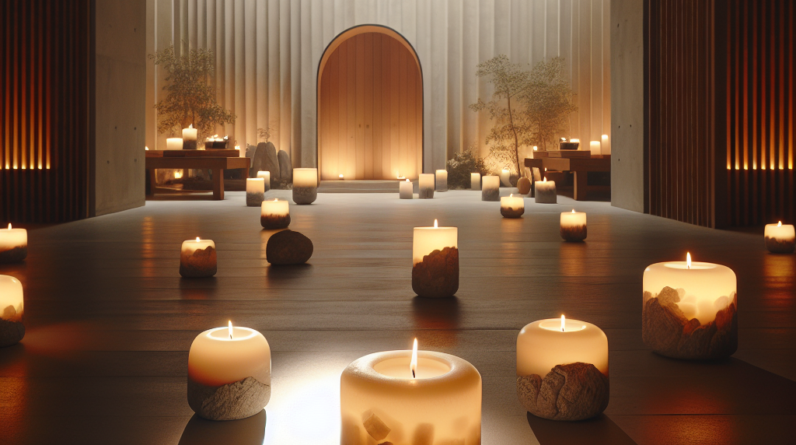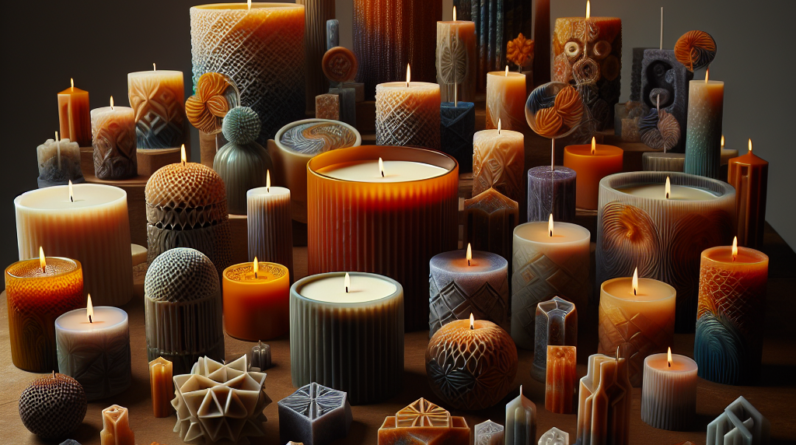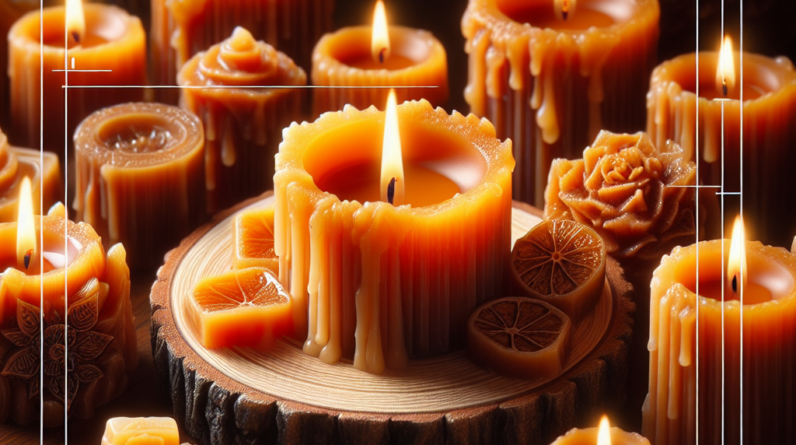
Hey there, candle lovers! Today, I’m super excited to chat about something that has completely transformed my resin candle-making experience—fragrance. It’s not just about the glow; it’s about creating an ambiance that resonates with your soul. Whether you’re looking for calming scents for those cozy evenings or uplifting fragrances to energize your space, I’ll break it down into five essential areas. So grab your favorite beverage, and let’s dive in!
Choosing the Right Base Notes
Understanding Base Notes
Base notes are the backbone of any scent profile. They’re the rich, deep aromas that linger long after the candle is lit. In my experience, choosing the right base notes can either elevate your candle game to a whole new level or leave it feeling lackluster. Think of them as the foundation of a house; everything else builds on this solid ground.
While working with resin, I’ve found that earthy scents like sandalwood or patchouli add not just warmth but also a sense of stability. Base notes typically have longer scent lifespan, making them crucial for the overall fragrance journey. So, when you’re blending, don’t forget to give these notes the attention they deserve!
When trying different combinations, start with just a few drops, as these scents are powerful. Trust me, you’ll want to avoid overwhelming your space with heavy tones that weren’t intended to overpower your candle experience.
Combining Base Notes Wisely
Next comes the fun part—blending base notes! I love mixing them with a hint of florals or spices to create a well-rounded scent. For instance, combining cedarwood as your base with a touch of vanilla can create a warm and inviting atmosphere, perfect for that chilly evening spent at home.
But don’t be shy! Experiment everywhere; the joy comes from discovering unexpected aromas that complement each other beautifully. Sometimes I get a little wild and mix bourbon with my woodsy notes for an unexpected twist, and boy, does it take my candles to another level!
Remember, the key here is balance. Too many base notes can drown out lighter, fresher scents. Don’t forget to take notes. Literally—jot down your blends so you can remember the magic recipes for your next batch.
Popular Base Note Options
If you’re wondering where to start, let me highlight a few of my favorite base notes. First up is vetiver—a rich, smoky scent that adds depth and complexity. Then there’s my personal favorite, sweet amber, which creates an inviting warmth that makes anyone feel right at home.
Don’t overlook the classic allure of oakmoss; it brings an air of nature indoors, especially fantastic in the spring! The key takeaway is to experiment with different oils; your palate will surprise you, and your candles will reflect your unique vibe.
Incorporating Middle Notes
The Role of Middle Notes
Think of middle notes as the heart of your candle’s fragrance. They fill out the scent profile, bridging the gap between base and top notes. That’s where the magic happens! Based on my experience, I’ve found that they add fullness and help create a sense of harmony in the overall aroma of the candle.
Lavender is a great middle note that is not only relaxing but really helps balance heavier base notes. I often incorporate floral and herbal scents here because they tend to be lighter yet impactful, making the overall experience delightful! Find what works best for your mood or the occasion.
It’s like a little hug in the air; you want the heart of your fragrance to be comforting and inviting. So when mixing, ensure these middle notes shine through without overshadowing your carefully chosen base layers.
Choosing the Right Combinations
When it comes to combining middle notes, I choose aromas that naturally complement each other. For example, mixing jasmine with eucalyptus can create a refreshing yet soothing aroma, ideal for easing a long day. Or try combining cinnamon with apple—my go-to for cozy, holiday vibes!
The trick is to allow your creativity to run wild! Create a little scent blend party by collecting different middle notes and seeing how they interact. I’ve had some epic ‘aha!’ moments during these sessions.
Just be patient with your blends—allow them to rest before finalizing. Sometimes a day or two can make all the difference in depth and complexity. It’s totally worth the wait!
Experimenting with Aromatic Middle Notes
I believe the beauty of making resin candles lies in that experimentation. When thinking about middle notes, I often consider seasonal inspirations. In the fall, I love using more spicy middle notes, like clove, to chip in some warmth, while in spring, I gravitate towards the lighter, herbal notes like thyme.
It can be a game-changer to switch up your middle notes depending on the season or your mood! Just don’t hesitate—get your hands on those oils and mix it up. This way, your candles not only smell great but evoke feelings connected to those special times of the year.
Trust me, your home will thank you—with a scent that makes it feel just right.
Exploring Top Notes
Understanding the Importance of Top Notes
The first impression can be everything! Top notes are what draws you in, making them incredibly important to your candle’s overall vibe. Think of them as the first sip of your favorite drink—refreshing and intriguing! My go-to top notes include citrusy options like bergamot or fruity options like berry scents.
These scents dissipate quickly but are essential for that initial burst of fragrance when you first light the wick. I always make sure to choose top notes that are vibrant and eye-catching; they set the tone and spark joy!
However, keep in mind that too much emphasis on these can lead to a fragrance that feels unbalanced. So, while you want that inviting lift, it’s essential to be aware of how they interact with the middle and base notes.
Experimenting with Different Top Notes
I often suggest picking a variety of top notes to play with in your wax. Having a selection on hand allows you to get creative! Lime and mint are wonderful combinations for a fresh, energetic lift. You could even try adding a touch of peppermint for a cooling sensation that wakes up the senses.
Another great idea is to draw inspiration from nature. Fresh-cut grass with a hint of lemon can boost your spring and summer vibes significantly. Just like that, you’re evoking memories every time someone lights your candle!
And don’t forget about herbal top notes like rosemary; they can offer a lovely freshness that uplifts the overall profile. So get adventurous, and let those fragrant combos dance together!
Choosing the Perfect Top Note Blend
Now, here’s my secret for choosing the perfect blend of top notes—balance! Too bright can be overwhelming, while too muted may disappear into the background. I love starting with one strong top note and building around it. For example, if I start with grapefruit as the main scent, I complement it with lighter florals to even things out.
Take the time to blend and test! It’s all about those delightful surprises. I love to have friends and family sniff the candles I’ve designed. Their feedback is invaluable. Plus, their reactions can guide future blends!
Every little detail counts, from scent trials to burn tests. Don’t rush—let the candling process become a delightful exploration!
Finding Unique Fragrance Combinations
The Joy of Various Fragrance Ingredients
Let’s face it: the world of scents is vast and magical! I’ve discovered countless fragrance oils that spark my creativity. Exploring different natural elements—like spices, flowers, fruits, and herbs—has been an adventure. Each week, I challenge myself to create a candle using a different ingredient I’ve not tried before.
The thrill of finding a rare blend that resonates deeply is what makes this journey worthwhile. It’s about shaping a sensory experience around what you love. Whether you mix fresh basil with a hint of citrus or try fig and cedarwood, you can create something special and uniquely personal.
Don’t stress about perfection. Instead, focus on what ignites your spirit and reflect it in your candles! You might end up creating something iconic!
Mixing Unconventional Scents
Now, let’s throw convention out the window! I’ve learned that some of the best fragrances come from mixing the unexpected. Lavender and sage? Yes, please! Or how about pairing vanilla with a hint of peppercorn? It’s wild but beautifully aromatic.
The world is your oyster! I’ve even done a blend with fresh linen and leather to create a smell reminiscent of a sun-soaked afternoon. The key to mixing unconventional scents is to keep your nose open and trust your instincts. You’ll surprise yourself with what you conjure!
Don’t forget—this is all personal to you! So don’t hesitate to pour your own experiences and memories into your creations, and go with what resonates with your unique personality.
Personalizing Your Candles
Finally, let’s remember one crucial point: personal touch goes a long way. I always try to incorporate experiences or memories tied to specific smells, making my candles not just aromatic but deeply personal. My friend loves peonies—so I made her a candle with floral scents that remind me of our spring outings.
Document your fragrance journey. It becomes a map of scents—each telling a story! It’s a fantastic way to connect with your audience. Your energy and backstory can elevate your crafting and truly engage people.
So go ahead and craft candles that speak to your soul and share them with the world. Each flickering wick tells someone a little about who you are!
Frequently Asked Questions
1. How do I choose the right fragrances for my resin candles?
Choosing the right fragrances involves understanding the roles of base, middle, and top notes. Start with your desired mood or purpose for the candle, and select scents that align with that intention, experimenting until you find your perfect blend!
2. Can I mix different fragrance oils together?
Absolutely! Mixing fragrance oils is where the magic happens. Just remember to keep notes on your combinations so you can replicate the successes and learn from the not-so-great ones!
3. How can I make my candles smell stronger?
To achieve a more robust scent throw, you can either increase the concentration of fragrance oil in your mix or experiment with adding more base notes, which tend to linger longer when burned.
4. What are some beginner-friendly scent combinations?
For beginners, try blending lavender with vanilla for a calming aroma, or citrus scents like lemon with mint for a refreshing lift. Starting with familiar scents makes it easier to understand how they interact!
5. Are there any fragrances I should avoid in candles?
Layering scents is key, but some fragrances can be overpowering or clash with others. Stay away from overly strong synthetic scents. Instead, opt for a blend of natural oils to keep it pleasant and balanced.
So, there you have it, folks! Creating resin candles is a beautiful journey of exploration. Embrace the scents, find your unique style, and light those candles with pride. Happy crafting!
Related Content
- The Best Seasons for Selling Different Resin Candle Scents
- Crafting the Perfect Resin Candle for Meditation Spaces
- The Aromatic Revolution: Why Exclusive Aroma Candles Are a Must-Have
- Crystals in Candles? How Resin Combines Stone and Light for a Magical Experience
- From Craft to Elegance: The Story Behind Handcrafted Resin Candles






